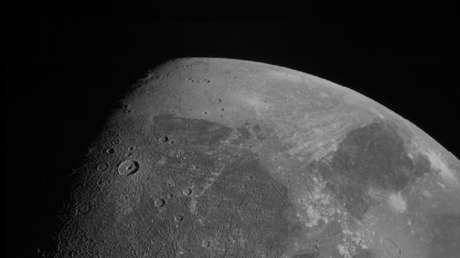Posted:
July 5, 2021, 22:37 GMT
The Hope Mars space mission has just obtained, for the first time in history, images of a mysterious aurora borealis on the Red Planet.
The UAE’s Hope Mars probe, which arrived at the Red Planet earlier this year, has captured several bright structures of discrete aurora borealis of atomic oxygen in the night sky of Mars.
There are three types of aurora borealis on Mars: protonated, diffuse, and discrete. Unfortunately, none of them can be seen with the naked eye, and until recently scientists were able to capture the glow of a proton only in detail.
The UAE Hope Probe, the first-ever Arab interplanetary mission, has captured the first global images of Mars’ separate aurora borealis. The high-quality images open up an unprecedented potential for the global scientific community to investigate solar interactions with Mars. pic.twitter.com/5Bt4ZZX2L9
– His Highness Sheikh Mohammed (HHShkMohd) June 30, 2021
The EMUS ultraviolet spectrometer, one of the three science instruments aboard the Hope Probe, also known as the Emirates Mars Mission (EMM), acquired “three images of atomic oxygen emission with a wavelength of 103.4 nanometers from Mars on April 22, April 23. And May 6, 2021 in a row”, the UAE Space Agency indicated in a Release Last.
“It’s not easy to pick up, so basically seeing it instantly with an EMM was something exciting and unexpected,” said Justin Deegan, a planetary scientist at the University of Colorado’s Laboratory of Atmospheric and Space Physics, citing Gateway. Space.com.

Experts know that the Earth’s aurora borealis are linked to the planet’s global magnetic field and are activated by charged particles coming from the sun. In this case, the ionized particles travel along the magnetic field lines towards the poles. But the situation is slightly different on Mars, where scientists have observed three types of aurora borealis.
The first type of aurora, the proton, occurs exclusively on the daylight side of the planet, unlike the other two types. Thus, the discrete aurora borealis, first observed in history with the Hope probe, is not limited to periods of intense solar activity, but only occurs in certain regions on the night side of Mars.
“The flashes of light that stand out on the disk of the dark night side are highly organized intermittent auroras, located where energetic particles stimulate the atmosphere after being guided by an irregular network of magnetic fields in the crust that originate from minerals from the surface of Mars,” explained IS. .

“Problem solver. Proud twitter specialist. Travel aficionado. Introvert. Coffee trailblazer. Professional zombie ninja. Extreme gamer.”




More Stories
With a surprise in the case: a strange cell phone from Nokia was introduced
PlayStation Stars: what it is, how it works and what it offers to its users | Sony | video games | tdex | revtli | the answers
t3n – Digital Pioneers | digital business magazine